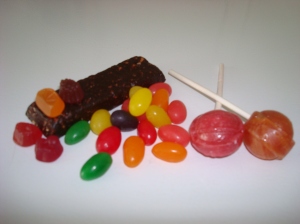I, for one, am quite thankful to the Sesame Street character, Elmo, who was talking about bananas on the Elmo’s World segment of the show. My son, then about 2 1/2 years-old (now 12), was beyond what could be labeled a “picky” eater. He was born with a tongue-tie (ankyloglossia) which made it difficult for him to manipulate the foods that he ate in his mouth. He often choked because of it and, therefore, was fearful of trying any new foods, especially fresh fruits and vegetables. So, when he came running into the kitchen asking to eat a banana because Elmo said they were good, I was ecstatic. And, because I didn’t have any in the house at the time, we rushed to the store to buy a bunch, of which he ate 4 – probably the most fruit he had eaten within that last year.
Recently, there has been much hype about the influence of marketing high-calorie, low-nutrient processed and prepackaged foods to children. In light of the rise in childhood obesity, there is good reason for this concern. It is not the actual advertising that is the problem, as is what is being advertised to the children. According to statistics posted on the website of the Campaign for a Commercial-Free Childhood, 98% of all food commercials viewed by children promote products that contain high amounts of fat, sugar, and sodium. Ten to 15 billion dollars are spent annually by food and beverage companies to market to children.
What is unfortunate is that these advertisements target children who are too young to have the knowledge or experience to discern what is healthy and what is “junk” for their growing bodies. A 2005 study, “Food Marketing to Children and Youth: Threat or Opportunity,” by the Institute of Medicine of the National Academies, indicates that this advertising greatly influences children’s diets and food preferences, as well as, their purchase requests. Further complicating the issue are the mixed messages being sent to the children. Licensed characters are used to promote both healthy (as with Sesame Street’s Elmo and bananas) and “junk” food eating. This further confuses the child as to what provides proper nutrition and what does not. One of the solutions offered by the Institute of Medicine to offset this problem is for food and beverage companies to discontinue using licensed characters to promote high-calorie, low-nutrient foods.
What do you think? Is that a step in the right direction? What role do we have as parents in educating and helping our children make healthy eating choices?









I think limiting a child’s access to TV would be a start. Less TV = less commercials viewed. And who knows, they might actually be doing something active instead of sitting!